Background:
My previous post about a flow test comparing the Blaze ATOM Race V2 vs a modified stock airbox opened the door to trying to get a better handle on the nature of the differences between the Blaze ATOM intake and other intake options for the Mk7 GTI.
Because there have been several beneficial attributes claimed for the Blaze ATOM intake there will be a series of posts dedicated to individual tests of these attributes.
In this test, I will be swapping between the various elbow/flange sizes to show the effect on the flow rate.
Shown below is a stock outlet elbow (left) and a hybrid flange (right).
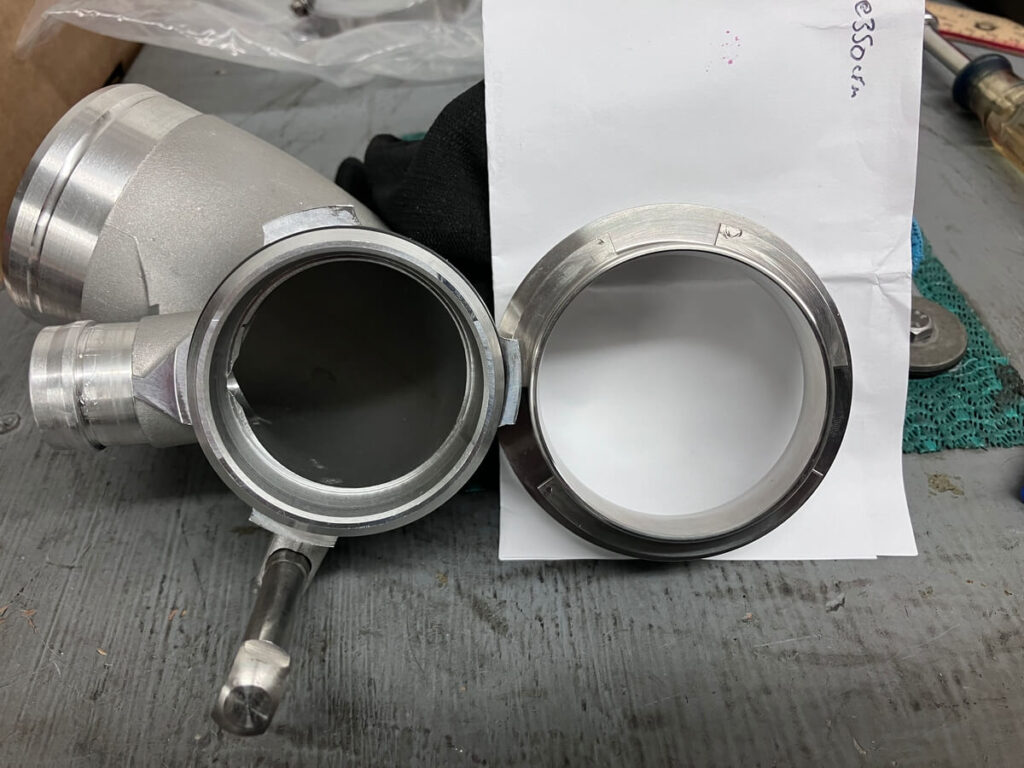
Analysis and Inspection:
The test results in the comparison with the stock airbox were surprising once the inlet elbow was sized to 76 mm.
As was mentioned in the previous post, comparisons were also made using the stock (49 mm) and hybrid (56 mm) inlet elbows and the Blaze ATOM Race V2 was down about 1.5% in flow rate versus the version I had tested in 2022.
I chalked this up to manufacturing variability, or perhaps a slight change in the design since 2022, but the unexplained difference was troubling.
I made a thorough inspection of the intake looking for anything that might be affecting the airflow. Then I noticed inside the silicone hose what looked like the end of a sheet of the material the hose was wrapped with had not completely attached to the interior wall.
There was a small tag of material that was loose. With a pair of tweezers and an exacto blade, I was able to get far enough into the hose to trim off this small piece of excess material, as shown below.
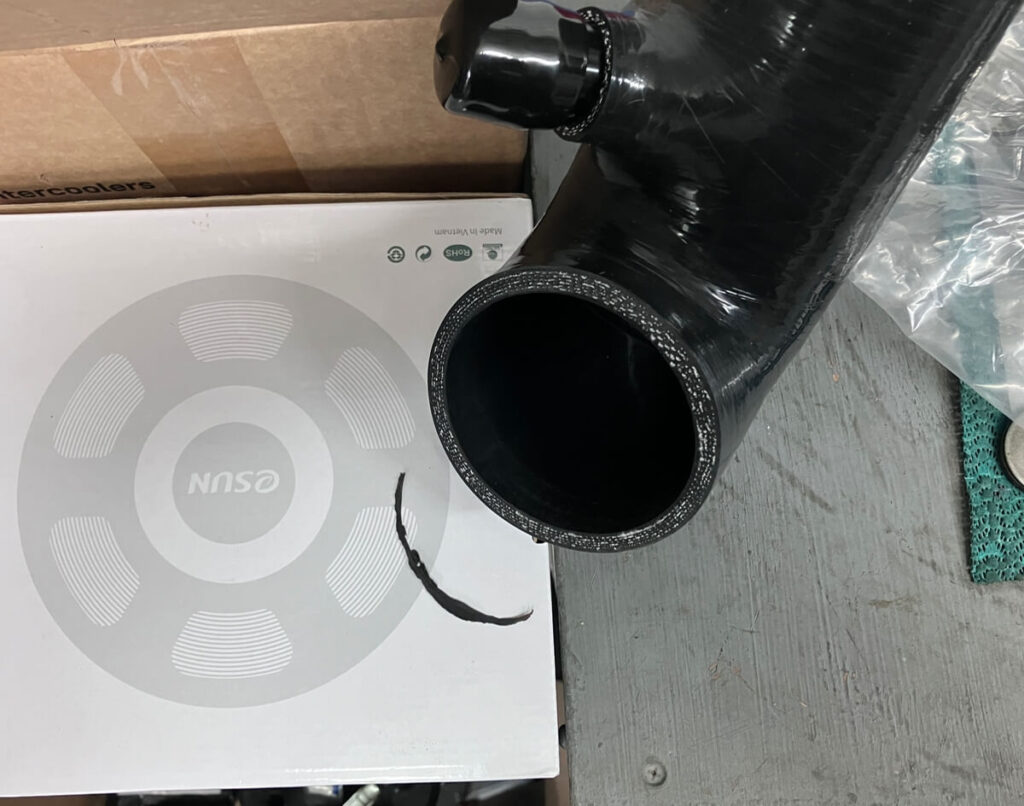
Here’s that piece of material shown with a penny for a sense of scale. Had I not had the baseline measurement to compare with I would not have suspected the small piece of material might have a meaningful effect on the airflow rate.
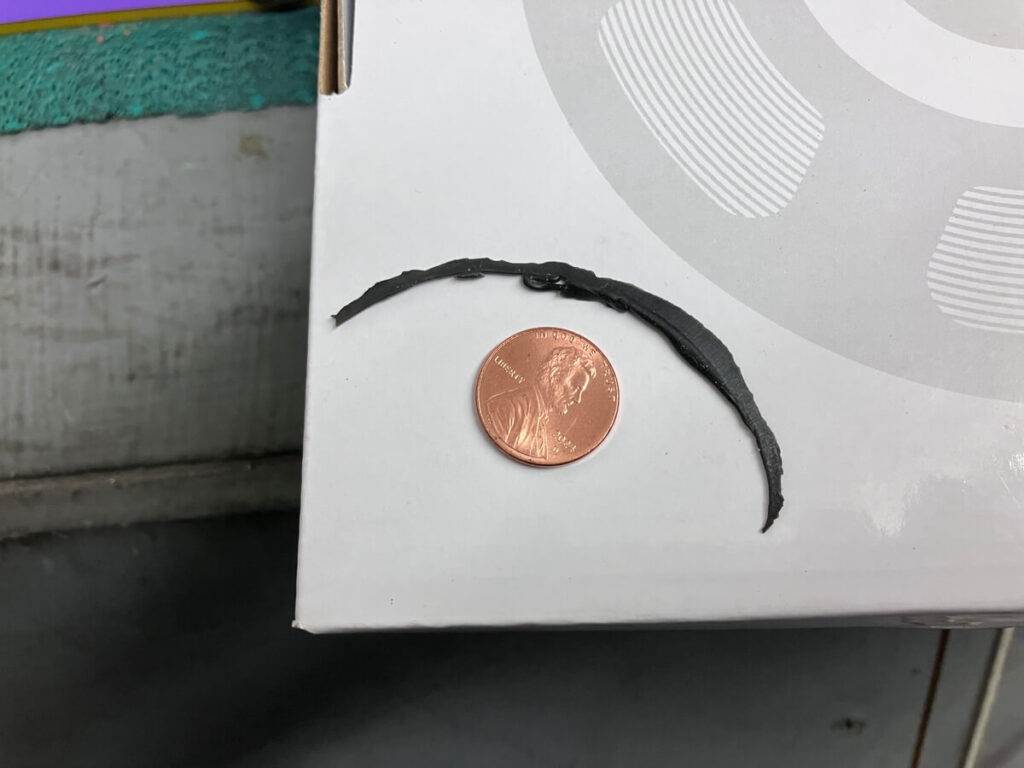
Content to have found something abnormal I attached the Blaze ATOM back up to the bench with the 76 mm hose and re-ran the flow test. There was an expected improvement in airflow, what I didn’t expect was for the flow rate to increase by 9%. (344 to 375 CFM @ 13″ of H2O).
With this part cleaned up, the Blaze 76 mm configuration flow rate is now on par with the lightly modified stock GTI airbox.
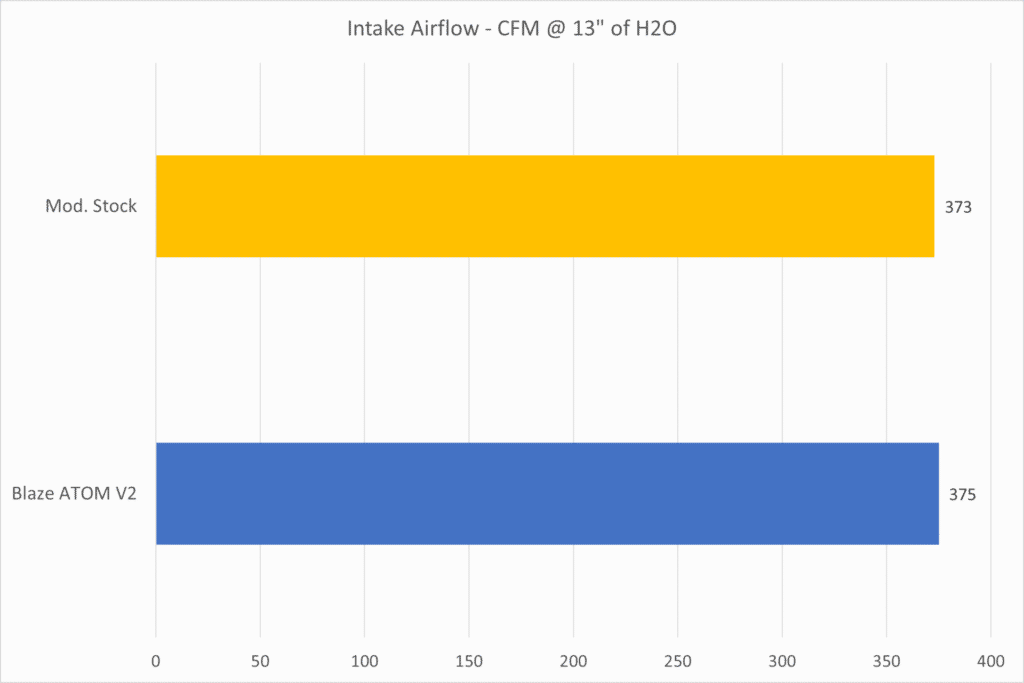
Note: Lightly / basic modifications of the stock airbox are opening the duct on the driver’s side and using an MST turbo inlet hose. Other common modifications that are not done are the removal of the snow guard grate, and replacing the stock air filter.
Test Procedure:
In this next test, the fully modified stock airbox is compared to the Blaze ATOM Race V2 with each of the inlet elbows (49, 56, 76), to show the effect of the inlet elbow on the flow rate through the intakes.
The fully modified stock intake consists of:
- Stock Mk7 GTI Airbox with extra holes in the side
- Removal of snow guard
- Aftermarket panel air filter
- Air duct on passenger side rear covered
- Air duct opened on the driver side
- MST inlet hose
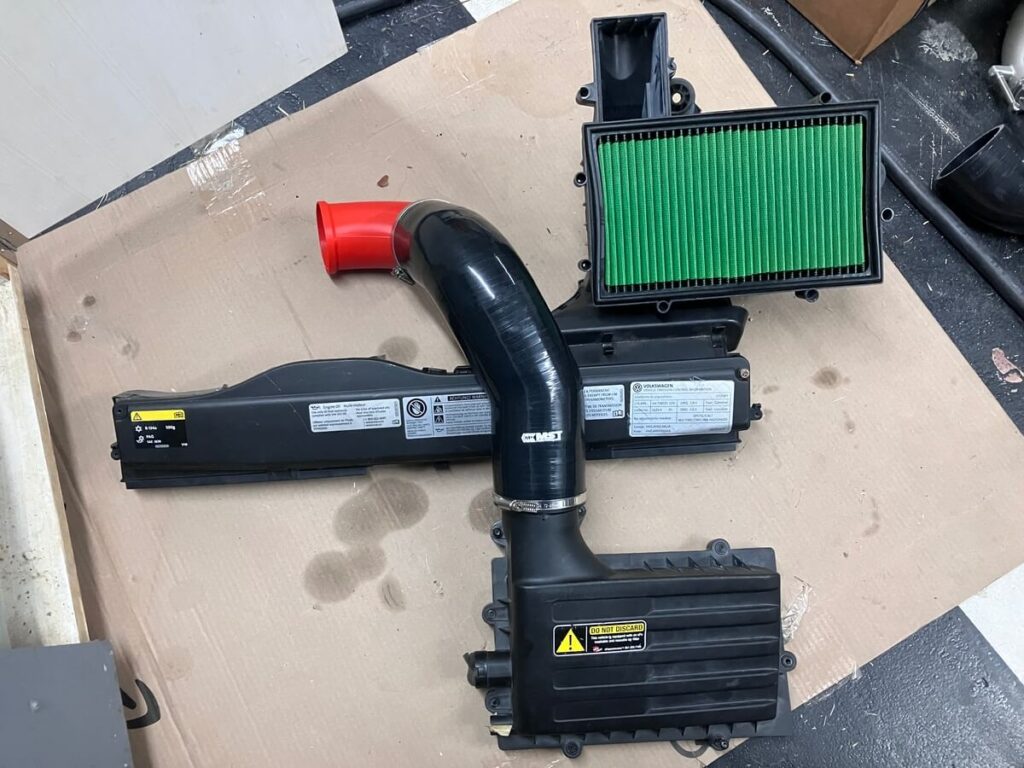
Shown next are the Blaze turbo flanges and the outlet end of the Blaze silicone hose:
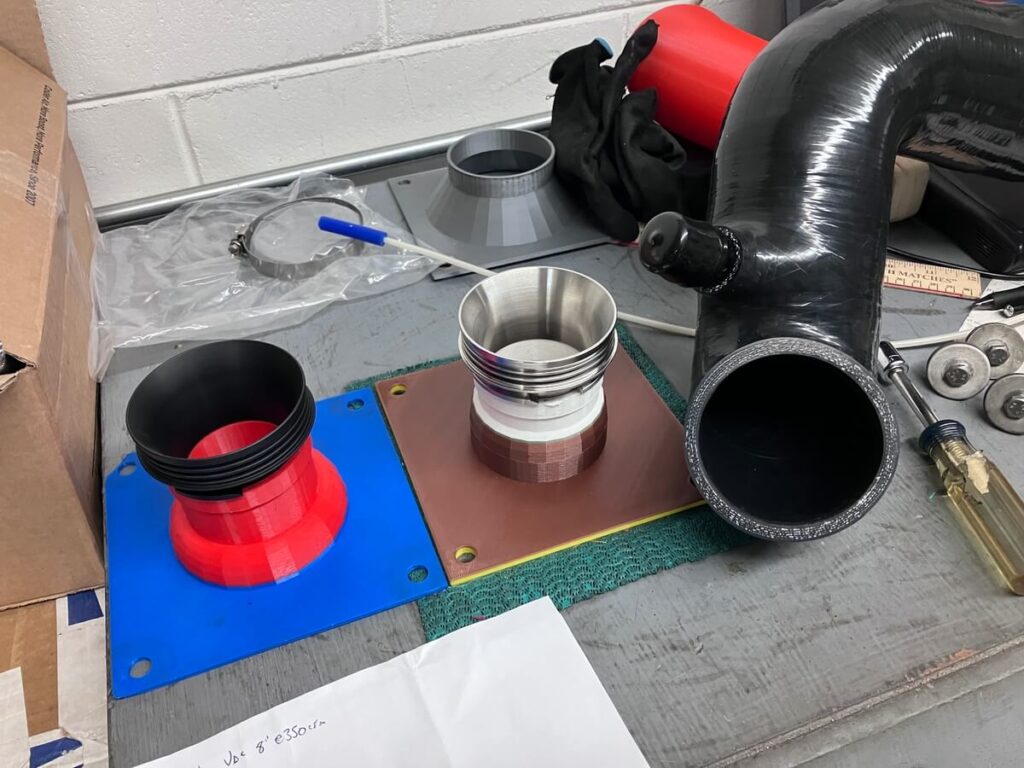
The aftermarket APR PEX intake will be tested by fitting it with each size elbow adapter and measuring the pressure drop versus airflow.
Flow rate measurements for all of the intakes will be made at the following pressures: 2, 5, 10, 15, 20, and 25 inches of H2O.
A pressure drop versus flow rate curve will be made using the individual data points.
Test Results:
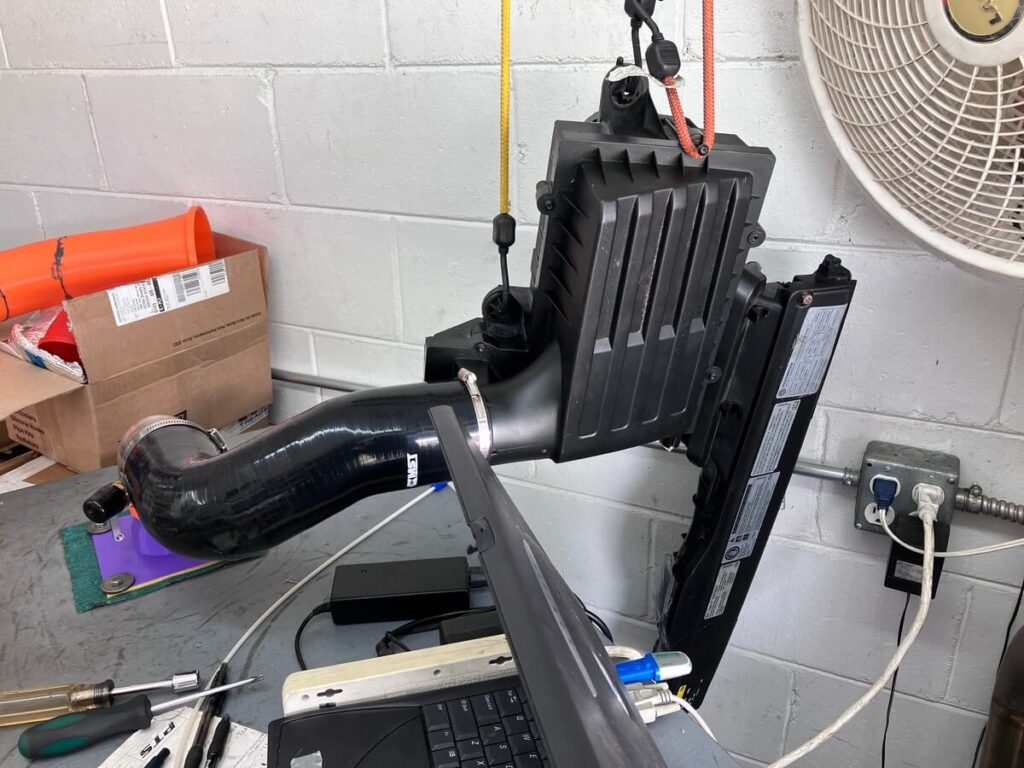
The first comparison is of the Blaze ATOM Race V2 and the modified stock GTI intake:
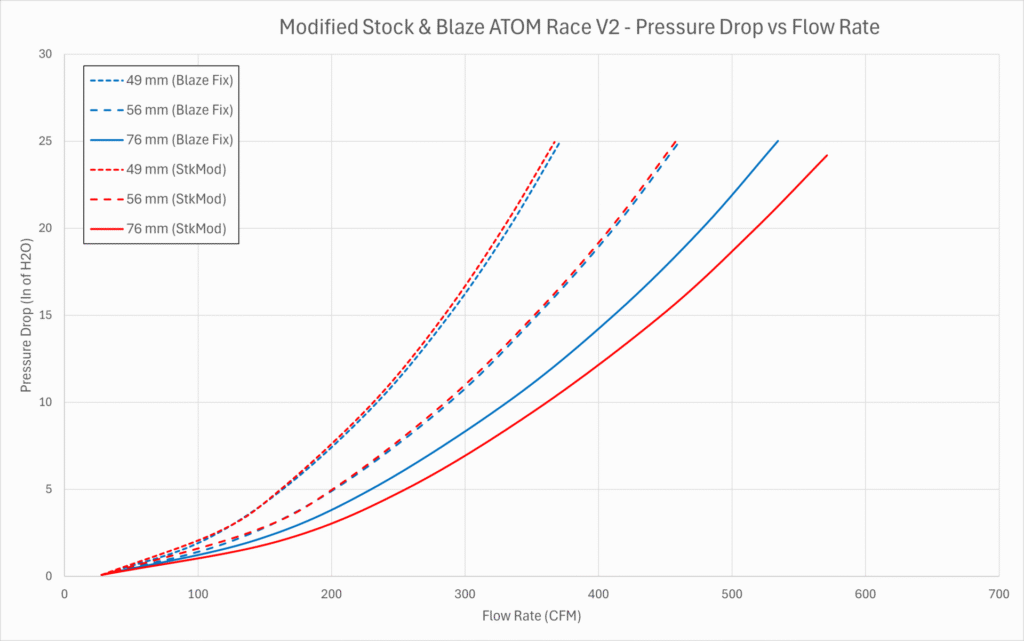
Something to note is the exponential growth of the pressure loss with increasing airflow. This contributes to the effect where some parts work well up to a particular power level and then the rapidly increasing “restriction” results in minimal gain with increasing effort.
With the 49 mm (stock elbow/flange) the two intakes have very similar pressure loss with slightly less loss from the Blaze ATOM.
With the 56 mm (hybrid elbow/flange) the two intakes have almost no difference, and what difference there is falls within the measurement margin of error.
At 76 mm (big turbo? elbow/direct hose) the modified stock intake shows an advantage versus the Blaze ATOM reaching higher airflow with less pressure drop.
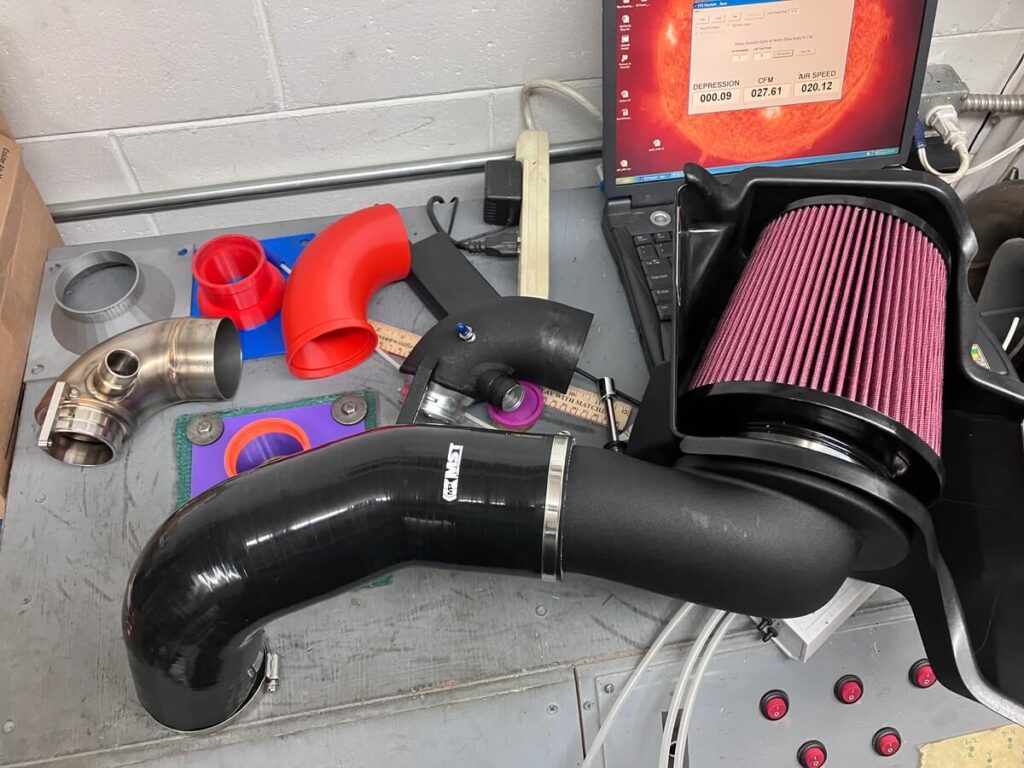
The results of testing with the APR PEX intake are shown in comparison with the Blaze ATOM Race V2:
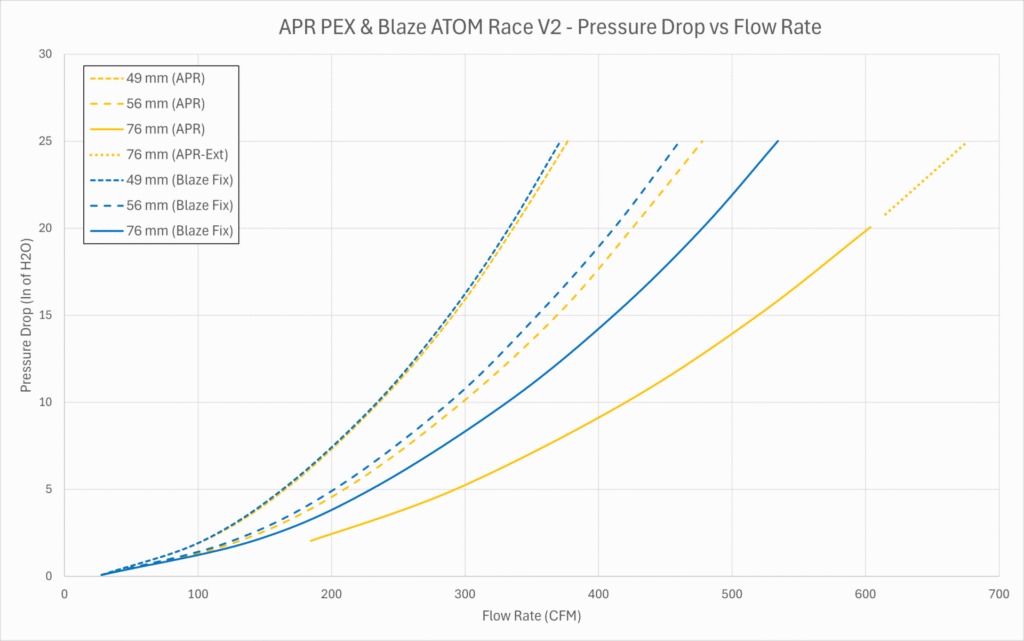
With the 49 mm (stock elbow/flange) the pressure drop difference between the intakes is negligible with a very slight advantage to the APR PEX.
At 56 mm (hybrid elbow/flange) the APR PEX has a small but distinct improvement in pressure loss.
The 76 mm (big turbo elbow/direct hose) shows a steadily increasing advantage for the APR PEX intake. The airflow rate reaches the flow bench maximum capacity of 600 CFM at approximately 20″ of H2O. To get an estimate of where the flow rate would be at 25″ of H2O an extrapolation is made out to 675 CFM – shown by the dotted orange line extending out of the solid orange line.
Conclusions:
A manufacturing imperfection was detected in the silicone Blaze ATOM inlet hose. A small piece of material inside the hose was not affixed to the hose wall and the removal of the piece led to a 9% increase in airflow through the Blaze ATOM Race V2 when attached directly to the flow bench and measured at 13″ of H2O.
The Blaze ATOM Race was compared with the stock GTI intake with several modifications. The two intakes flowed similarly using the 49 mm (stock) and 56 mm (hybrid elbow/flange).
Using the 76 mm elbow and Blaze hose direct to the bench the modified stock GTI intake flows approximately 9% more than the Blaze ATOM Race V2.
The APR PEX intake was compared with the Blaze ATOM Race and the two had similar pressure versus flow rate curves using the 49 mm (stock) elbow/flange.
Using the 56 mm (hybrid) elbow/flange the APR PEX intake showed a small advantage of lower pressure drop for an equivalent airflow rate.
Using the 76 mm elbow with the APR intake and the Blaze inlet hose direct to the flow bench the APR intake flowed approximately 26% more than the Blaze ATOM Race at the same test pressure.
These results are consistent with previous measurements that showed minimal difference in flow rates between the intakes when attached to a 49 mm or 56 mm elbow/flange.
When testing the APR PEX and modified stock airbox with the 76 mm elbow and Blaze ATOM direct to the bench the APR PEX had the lowest pressure loss versus flow rate curve.
These results support the previous conclusion that for turbochargers using a stock (49 mm) or hybrid (56 mm) elbow, choosing between these intakes based on pressure loss is unnecessary. Other criteria can be used with this configuration.
In a setup where a 76 mm inlet elbow, or similar size hose, is used, the APR PEX flows approximately 16% more than the modified stock GTI intake and approximately 26% more than the Blaze ATOM Race V2.
